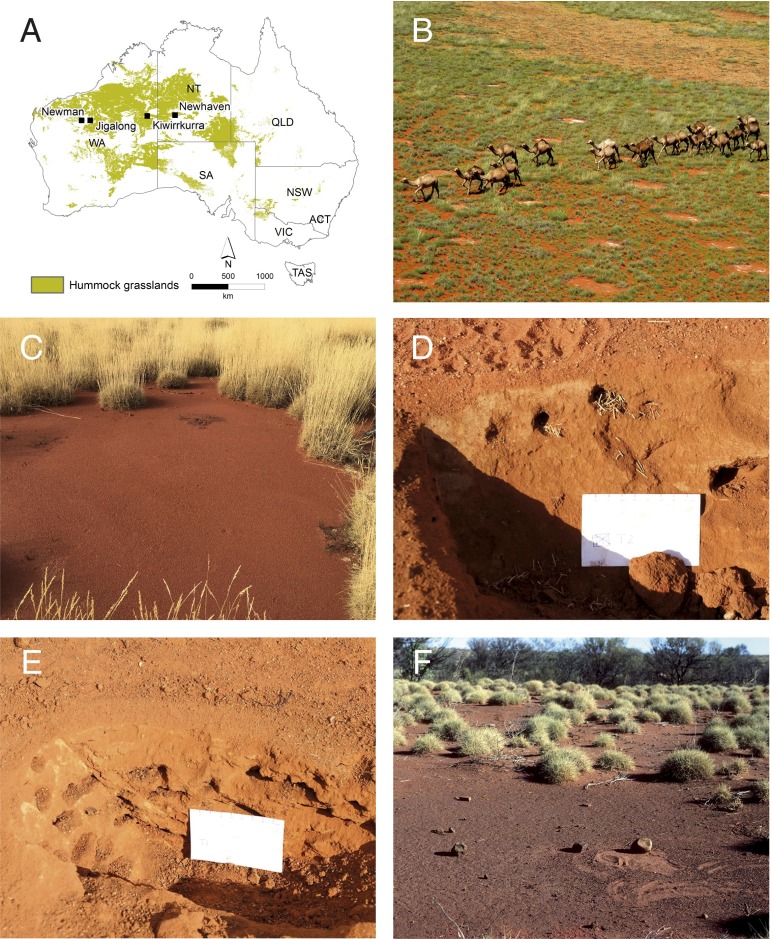Fig. 1.
Circular bare areas at oblique, ground level, and subterranean views in Australian desert spinifex grasslands. (A) Australian distribution of Triodia hummock grasslands. Our excavations of circular bare areas near Newman, Jigalong, Kiwirrkurra, and Newhaven revealed that all were termitaria. Map by N. Raisbeck-Brown (Commonwealth Scientific and Industrial Research Organisation, Geelong, Australia). (B) Triodia hummock grassland with circular bare areas and a recent burn (background right) at Newhaven (NT, Australia). Feral camels give scale. Image by J.S. (C) Bare area in Triodia basedowii grassland at Newman (23.43730°S, 119.81839°E). An aeolian surface sand layer obscures most of the termitarium pavement, but a low termite mound is present on the far side (pocket knife indicates scale). Image by P.K. (D) At Newhaven, one bare area (22.75037°S, 131.26035°E) was excavated to a depth of ∼20 cm. Shadowed hollows are exposed termite chambers less than about 5 cm in diameter. Upper chambers included grass chaff typical of Drepanotermes spp. harvester termites. Image by J.S. (E) At Newhaven, another bare area (22.75006°S, 131.26014°E) excavated to a depth of ∼20 cm shows the aeolian sands over a cemented matrix with termite chambers. Image by J.S. (F) Pavement termitarium with artifacts used by Martu people for seed processing (McKay Range, WA, Australia). Bare area surrounded by T. basedowii hummocks with A. aneura fringing a shallow watercourse. People swept these pavements clean of aeolian sands to provide wide, flat, hard surfaces suited to threshing, food processing, and artifact production. Image by F.J.W.

